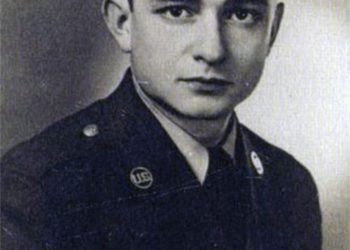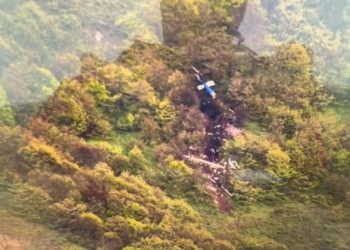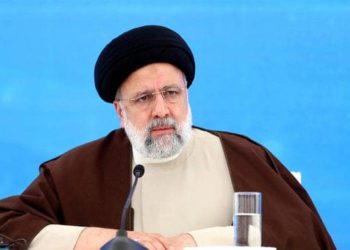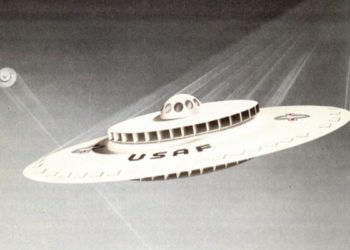How did Germany produce so many aces in WWII? There are, as usual with such questions, several factors at play.
First, we must take a look at aerial warfare during WWI. By 1914, flight was in its infancy, let alone aerial warfare, which did not even exist just yet. Mankind had only started flying successfully 11 years prior to the beginning of the conflict (in 1903). By 1914, no one had any idea of what was required to fly and maintain a fleet of aircraft, let alone what was required to fight in the air or how to train pilots to not only fly but fight.
The fact the British managed to send 64 planes across the Channel to France in 1914 was a miracle in itself as the endeavour had only been successfully attempted for the first time by Bleriot only 5 years prior to the beginning of the war !
The technology, which was not yet mature, was pressed into combat and everyone was proceeding ahead with trials and errors… It was plain and pure improvisation! Planes were at first used for aerial reconnaissance, but by 1915, dogfights had become a regular thing. What had started by accident (two recon planes shooting at one another) had suddenly become a new branch of warfare and all sides were trying to gain air superiority.
It has to be said that the British had a head start compared to their enemies and allies alike: They had created the Central Flying School in 1912. Back then, they only had 19 officers qualified to fly. However, it meant that by the beginning of the war, they had a structure and a curriculum to train new military pilots, which was more than could be said for the other belligerents taking part in the conflict.
By 1914, newly qualified British pilots were expected to take up to the air and fight after having completed a short basic training course followed by 15 hours of solo flying. There was no standardisation in equipment. As such, squadrons were made up of different aircraft types and models. A pilot who had completed his 15 hours of solo flying on one type of aircraft might be sent to fight in a totally different plane with no time to test fly his new mount before hand.
New types of aircraft were often sent to the front with barely any testing done, so aircraft behaviour in general and their flying characteristics were left to those pilots to find out when they took up to the air…
Furthermore, the curriculum had been devised between 1912 and 1914, during peacetime. It barely covered the flying part of the job and did not cover at all the fighting part of it !
To say that pilot training was inadequate and insufficient is an understatement. And yet, by 1914, that British training program was the best there was! And it got worse: By 1915, sending new pilots to the front became the priority due to mounting casualties. As such, it meant that between 1915 and 1917, many pilots were sent to the front with only the basic instruction course completed and only a handful of flying hours under their belt. It is no surprise then, that those pilots earned for themselves the nickname “Suicide Club” as their life expectancy at the front was estimated at 11 days.
More pilots were killed in training or directly after their training was considered completed than during actual combat.
So, the British Royal Flying Corps entered the war with an advantage. By 1915, Germany was having a difficult time in the air despite having a handful of extremely talented pilots. Yet, by 1916, the Germans had gained the upper hand in the air, despite a numerical inferiority. By the end of the conflict, 391 German pilots had won the title of Ace. This list of German aces reads like the who’s who of early aerial warfare: Udet, Richthofen, Boelcke, Goering Immelmann, Voss, Baumer…
How did they do it ?
Everyone knows Richthofen, the Red Baron and his flying circus. Everyone has heard of Immelmann. Goering is also famous. But it is Boelcke that the Germans consider as the father of their air force and indeed as the father of air fighting tactics. Oswald Boelcke joined the German army in 1912 and subsequently graduated as a telegrapher. He joined the Fliegertruppen des deutschen Kaiserreiches (Flying Troops of the German Empire) in 1914 and after a 6 week course, he was considered a qualified pilot and was ordered to act as an instructor and train new pilots!
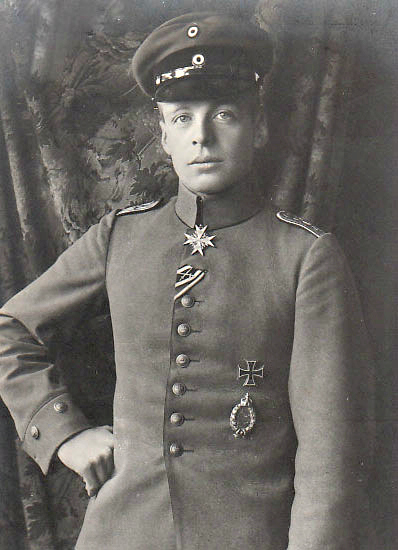
As the war began, he became a reconnaissance pilot (in 1914, that was the only job required of a pilot!). But it all changed in 1915 when three French pilots experimented with guns mounted on their planes and started actively hunting for German aircraft and scoring aerial victories… Dogfighting and fighter planes were born !
The French Adolphe Pégoud became the very first pilot to earn 5 aerial victories. The French press called him “l’As”: “The Ace”. The word stuck immediately. Soon after, another French called Eugène Gilbert became the second ace… The press loved it, the public loved it and suddenly, every single pilot out there only wanted one thing: To become a fighter pilot and become an ace!
Boelcke was one of them. By August 1915, both Boelcke and Immelmann, now friends, not only flew specialised Fokker Eindecker fighter planes, but both were scoring aerial victories. By early 1916, the two friends were actually racing one another to see who could score the most aerial victories and become the highest scoring German ace !
But Boelcke was aware that pilot training was inadequate and that this caused too many pilots to die prematurely before they could hone their skills and improve their chance or surviving aerial duels. He decided to try and help his country win the air war. His first step was to analyse his aerial duels and write down a set of rules and advice that could be applied to all fighter pilots, current and upcoming. It also contained tips and manoeuvres to engage and target all three types of military planes in use at the time (fighters, bombers and reconnaissance aircraft). That brochure was titled “Experiences of Air Fighting”. The set of “commandments” it contained became known as the “Dicta Boelcke”. “Experiences of Air Fighting” was the very first Air Combat Tactics manual and was subsequently distributed to all German pilots and trainee pilots.
Boelcke also devised early warning systems to detect incoming raids. Another one of his major contribution to air warfare was to invent and organise the fighter squadron system. It sounds logical to us, but it had never been tried before! Up until then, fighters were sent to the front piecemeal with no coordination between the pilots. Those German squadrons, with a squadron leader communicating with his wingmen through primitive means (hand gestures, signals) gave the Germans local air superiority one battle at a time and ended up giving them the advantage by 1916.
In 1916, Boelke was tasked with creating and leading one of the very first fighter squadron in the world. He handpicked pilots himself. One of those pilot was a young cavalry officer called Manfred Von Richthofen… This elite fighter squadron was called Jagdstaffel 2. And Jagdstaffel 2 ended up scoring 336 aerial victories for the loss of 44 of its own pilots. 25 pilots belonging to this outfit achieved Ace status before the end of the war.
Finally, Boelcke pushed for the creation of the Imperial German Air Service’s “Jastaschule”: Fighter School. There, trainee pilots would not only learn all the basics on how to fly a plane, but also how to fight with it, absorbing specialised fighting techniques and aerial combat manoeuvres passed on first hand by veteran pilots.
Oswald Boelcke died on the 27th of October 1916 following a mid-air collision with a fellow pilot. He had 21 aerial victories to his name. The (British) Royal Flying Corps actually air dropped a wreath behind German lines, to be displayed for Boelcke’s memorial. it read “To the memory of Captain Boelcke, our brave and chivalrous opponent”.
In WWII, the Luftwaffe honoured his name with one of its bomber squadron named ‘Kampfgeschwader‘ 27 Boelcke. And his legacy is present to this day as the current German Air Force also fields a fighter bomber wing named Taktisches Luftwaffengeschwader 31 Boelcke.

It is worth noting that by 1917, the British had acted and adapted to the new realities of aerial warfare. They modified their curriculum and opened more flying schools, manned by veteran pilots with experience at the front. There, they could instruct trainee pilots properly and pass on their knowledge of combats to them. By the end of 1918, the British were operating 30 specialist schools and 100 training squadrons. Aviator course was 11 months long and trainee pilots went through at least 50 hours solo flights before graduating.
Here are the main rules found in Dicta Boelcke:
– Try to secure advantages before attacking. If possible, keep the
sun behind you. Climb before and during the approach in order to
surprise the enemy from above, and dive on him swiftly from the rear
when the moment to attack is at hand.
– Attack when the
enemy least expects it or when he is preoccupied with other duties
such as observation, photography, or bombing.
– Always
carry through an attack when you have started it.
– Fire
only at close range, and only when your opponent is properly in your
sights.
– Always keep your eye on your opponent, and
never let yourself be deceived by ruses.
– In any form of
attack it is essential to assail your enemy from behind.
– If your opponent dives on you, do not try to evade his
onslaught, but fly to meet it. Always point your plane/gun toward
danger.
– When over the enemy’s lines never forget your
own line of retreat.
– At Staffel (squadron)
level, attack on principle in groups of four or six. When the fight
breaks up into a series of single combats, take care that several do
not go for the same opponent.
– Foolish acts of bravery only bring death.
1918 brought an end to the war, but not an end to Germany’s
aerial ambitions: Between 1919 and 1920, the Luftstreitkräfte
created an Operational Air War Doctrine, taking on all the lessons
learned from aerial warfare and Air War Operations throughout WWI.
Veteran pilots were involved so that their individual advices,
tactics and techniques could be compiled into one coherent
standardised doctrine. Unsurprisingly, this Doctrine formed a solid
base for the Luftwaffe’s own doctrine from the 1930’s onward.
It could all have ended in 1920 when the allies, through
the Versailles treaty, banned Germany from owning an Air Force: The
Luftstreitkräfte (German air force) was therefore disbanded.
The Germans did not give up, though, and laid down the bases that contributed to their WWII pilots scoring so many victories. Barely 2 years later, In 1922, they clandestinely created a brand new Aviation Staff within the German army command structure… It was not detected by the allies because it was named “Army Command Inspectorate of Weapons Schools”.
In 1924, the Germans established a secret fighter pilot academy in
Lipetsk, USSR after concluding a military agreement with the Soviets.
The base was officially called “4th squadron of the 40th wing of
the Red Army” to cover its activities. The German secretly ordered
100 aircraft from Fokker (The Netherlands) and the disassembled
planes were sent to Lipetsk alongside a handful of German flight
instructors. There a core nucleus of pilot/instructors were to be
trained in aerial warfare.
Germany sourced pilots through
various channels from 1926 onward. They created a civilian flight
school in Germany that was supposed to provide the Lufthansa with
pilots for its airline and air mail activities. The civilian school
also formed many pilots for “advertising squadrons”, you know,
those little planes trailing advertising banners behind them…
Through those channels, many more pilot than was necessary were
trained… The most promising amongst them were discreetly sent to
the secret base of Lipetsk.
The same year, in 1926, Germany requested the authorisation to develop the capabilities necessary to design and manufacture high performance aircraft so as to be able to take part in races, air shows and try to set speed records… The allies accepted and Germany was granted its request…
Lipetsk operated for 7 years, in total. By the time it was shut down in 1933, 120 pilots, 300 ground personnel and mechanics and 450 clerks and administrative staff had been trained there.
One of the last piece of the German clandestine program was the promotion of gliding as a hobby amongst German civilians. From 1933 onward, organisations such as the Deutsche Luftsportverband (German Airsport Association—DLV) not only promoted gliding as a hobby, but opened and operated hundreds of local branches and airfields throughout the country, where enthusiastic Germans could go and learn all the basics in flying gliders and gain experience. Even the Hitler Youth organization had its very own Flieger program. Through those clubs, thousands of older teenagers and young adults acquired basic aeronautical and flying skills…
In 1935, the Luftwaffe was created and immediately staffed with the pilots, instructors, mechanics and clerks that had been clandestinely trained in Lipetsk, alongside the personnel that had been trained by Lufthansa. It also had planes and a solid doctrine in place. All this from day one. Basically, the Luftwaffe hit the ground running. Furthermore, through its glider clubs, Germany had a large pool of young, passionate and semi-skilled pilots that could be converted into professional pilots fairly quickly. Basically, overnight, the Germans had the necessary structure and manpower to not only operate a capable air force but also to expend it rapidly.
By 1936, Germany had the opportunity to put its doctrine, pilots and machines to the test: There was a civil war in Spain. The Luftwaffe promptly sent men and machine to Spain where they remained and operated from 1936 to 1939.
The pilots of the Condor Legion refined doctrine and tactics and adapted them to the realities of modern air operations. They literally wrote the instruction manual and curriculum for future Luftwaffe pilots… Its effects are still felt today as many current jet fighter operations are directly inspired from their work.
All this means that at the beginning of WWII, the Luftwaffe pilots were probably amongst the best trained pilots in the world. Their training had solid foundations based in WWI experience, but the curriculum had constantly been updated for two decades and those tactics had been practised in operational conditions and subsequently refined to the requirements of modern warfare.
Then came WWII.
The Luftwaffe took part in many campaign: The Polish Campaign came first in 1939, followed by Norway and Denmark in 1940. then, the same year came The Netherlands, Belgium, Luxembourg and France as well as the Battle of Britain. In 1941 came Greece and the Balkans campaign, closely followed by North Africa and the Soviet Union !
Throughout the war, Luftwaffe units operated in up to 30 different countries, non stop, from 1939 to 1945. Its area of operation was huge, going from Western Russia to over the Atlantic and stretching from the Arctic to North Africa, including the Black Sea and Mediterranean basins.
German pilots and planes performed very well in Poland and dominated their Polish counterparts. Still, their losses amounted to 285 aircraft lost during that campaign. Then came Denmark and Norway where Luftwaffe losses totaled 260 aircraft. The campaign over The Netherlands cost Germany an additional 250 aircraft. At the same time, the Luftwaffe operated in the Belgian skies where it lost an estimated 432 aircraft. Then came the biggest test to date: France. The French campaign cost the Luftwaffe 1428 aircraft. This campaign alone (French Campaign) cost the German air force roughly 28% of its front line strength. Aircraft losses include fighters, bombers, maritime reconnaissance planes, gliders as well as bombers. Also keep in mind that German pilots were opposed by British and French pilots throughout their campaigns in Denmark, Norway, The Netherlands and Belgium.
Those figures seem high, but the losses inflicted to the Polish, Danish, Norwegian, Belgian, Dutch, British and French air forces were actually higher. In total, an estimated 3760 allied planes had been destroyed or captured while German losses amounted to 2646 aircraft! It is near impossible to estimate German pilot losses during that period of time, but a reasonable estimate would put the figure of pilot killed and missing in action (potentially taken prisoner) during that period of time at around 4,000. And to show how well prepared the Luftwaffe was, It was said that by then, the Germans still had a reserve of 10,000 pilots! The service would have easily recovered from those losses if the war at stopped there and then… But it had only just started !
Then came the Battle of Britain which cost the Luftwaffe an estimated 2,700 pilots and an additional 1887 planes (873 fighters and 1014 bombers).
This means that by October 1940, roughly 13 months after the
beginning of the war, the Luftwaffe had lost 4533 aircraft of all
type. Most importantly, it had already gone through 30% of its
operational pilot reserve… And there was still 5 more years of
fighting ahead for the surviving (and upcoming) pilots after this!
To put it simply, the Luftwaffe was already past its best
prior to Operation Barbarossa in 1941 !
This relentless pace of operations, then, was also a contributing factors for the amount of German aces produced by the Luftwaffe in WWII: Pilots flew constantly, and in a target rich environment. The top 10 German aces of WWII flew 7762 combined combat missions. Unfortunately, this relentless pace would also cause many casualties.

Such conditions would take its toll on any country on earth. And Germany was a small nation when everything was said and done. Its own population and demographics could not hope to keep pace with the war’s requirements and losses could not all be replaced. Combat fatigue was as real for German pilots as it was for any pilots continuously flying in a high attrition rate conflict such as WWII.
Up until 1942, all pilots from all sides were expected to fly as
long as required. British pilots, for example, could fly over 100
combat missions per year. The standard procedure was to give pilots a
48 hours leave every two weeks. This would carry on up until
commanders would deem individual pilots and crew members as having
reached the end of their physical and mental endurance, after which
they were granted a full 7 days of rest before being required to
resume flying and fighting. It would go on until pilots were deemed
unfit for duty.
But it became clear to the British Bomber
Command and RAF that more was to be done for pilots to avoid
experiencing what was called War fatigue or War wariness.
Sometimes
in 1942, the Brits established the tour of duty system. From then on,
fighter pilots were limited to 200 operational flying hours then sent
on extended leave, before having the opportunity to come back as
instructors. Bomber pilots were limited to 30 missions, followed by a
period of rest, then an opportunity to fly an extra 25 mission before
being rotated out to administrative duties or work as an
instructor.
By 1942, the USAF was operating a one
year at the front policy regardless of tempo. But a study at the time
showed that most Bomber crews lost their effectiveness after 6
months. An officer leading the study found that beyond that point,
they flew and fought as if “punch drunk”
By the end of
1942, the US 8th Air Force was operating a tour system
that saw bomber crews fly a maximum of 30 missions and fighter pilots
have an operational 200 flying hours ceiling before being rotated
out. There was the option to rotate them after 25 sorties/150 flying
hours if the condition of the crew or pilot warranted it. But a
shortage of replacement pilots often let to active duty pilots being
kept for longer. B-25 medium bombers crews routinely flew up to 50
sorties in 1943.
Luftwaffe pilots did not go through any
tour of duty system like their ally counterparts. There simply wasn’t
enough new pilots coming on stream to enable this system. They flew
till they were wounded, sick, taken prisoner or dead. It means German
pilots collectively accumulated a huge amount of flying hours and
fighting experience.
Toward the end of the war, the Luftwaffe lost control of the German skies… As the tide of war turned against Germany, its pilots faced even more enemies. Each mission was a fight for survival, but also an opportunity to increase individual scores. German pilots flew in an ever increasingly target rich environment while some ally pilots went through the war without ever getting involved in a dogfight…
This situation was a Darwinian environment where young recruits and average pilots were weeded out of the pool very quickly indeed and where only the very best survived. In the end, even some of the best succumbed to the physical and mental strain related to years spend on high tempo operations.
Heinrich Ehrler, an ace with 208 kills ran out of ammunition while intercepting American bomber formations in 1945. He said goodbye to his wingman over the radio and casually rammed one of the bomber… Otto Kittel was shot down by a Sturmovik gunner in 1945… He was an ace with 267 kills to his name…
So statistically speaking, while the odds were stacked against German pilots (survival wise), it also meant the odds were in their favour for a chance to score air kills…
And while ally pilots were rotated in and out of active service, German pilots just flew and flew and accumulated more experience and more kills… Toward the end of the war, Germany was running out of pilots, fuel, oil and time. Young German recruits had a life expectancy of mere hours, only receiving a handful of hours in basic training. There was not enough fuel for them to learn how to fly, they were given instruction on the ground. The lucky ones got to taxi a plane back and forth along a runway with an instructor crouching next to them on the wing, shouting basic instructions. Then, they were being strapped into a plane. Those who survived the take off faced high odds of being involved in a dogfight on their very first flight…
As manpower levels for the Luftwaffe dwindled and as new pilots were near enough useless, if fell on the increasingly smaller pool of experienced German pilots to take on more missions. Thus, they accumulated even more experience and victories. Out of the top 10 German aces of WWII, 8 survived the war… But as you start going down through the aces list, you start encountering more and more pilots who did not survive the conflict… The lower you go, the higher the chances the pilots did not make it…
The very last factor involved might be the most controversial: The Bf-109. Ace and widow maker.
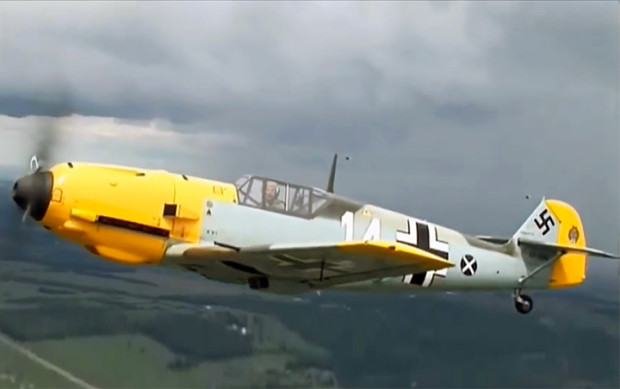
You can hear some veterans talk about how the Spitfire was easy to fly. It is all relative. Speak to the men who still fly vintage military aircraft today. They will all tell you, without hesitation, that almost every single one of those planes were highly strung thoroughbred. They were all of them, a handful. But some, like the Spitfire or the Hurricane, were slightly more forgiving than others… However, the Bf-109 has earned itself a reputation for being a hard plane to handle.
The Bf-109 had cambered main gear legs. Its landing gear were narrow and the tyres touched the ground at 25 degrees. The plane was designed as such to allow easy disassembly and transport. The downside was that centrifugal forces induced by the propeller’s torque were communicated to the wheels in a pronounced fashion. You only just needed a tyre to slightly bite into the ground on take-off for the plane to want to turn inward. If the pilot listened to its instinct and tried to over-correct the sudden change in heading with his rudder, the plane would suddenly yaw the other way around and could flip over. The risks increased as the plane picked up speed and lifted its tail off the ground: The gyroscopic effect of the propeller communicated to the wheels increased proportionally. This behaviour and tendency to give in to directional instability on take-off was the plane’s biggest weakness. Many inexperienced pilots crashed and died due to this. And even experienced pilots were sometimes caught out. The aircraft was susceptible to the same forces on landing and had the same tendency to yaw. A problem the pilot had to face despite post battle induced stress and tiredness.
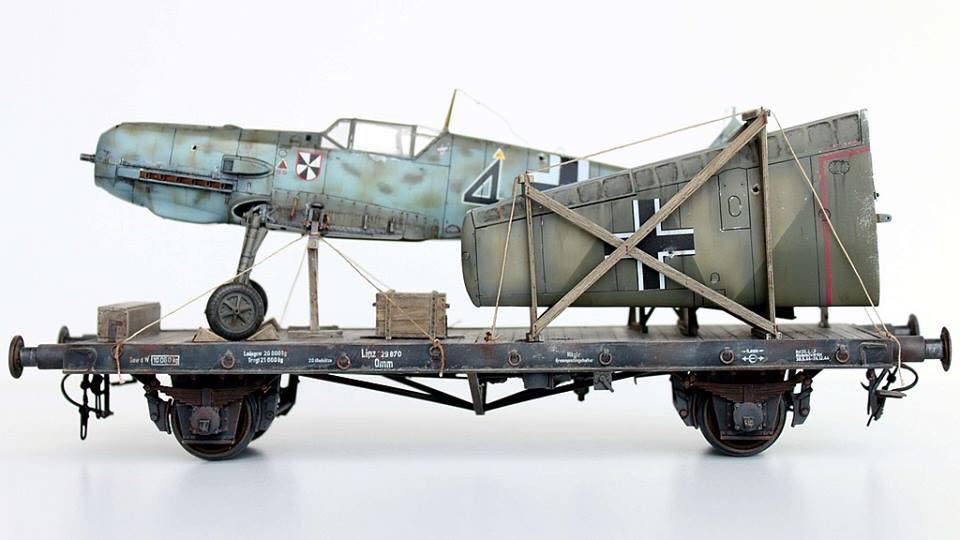
The plane’s engine also required a lot of attention from the pilot. The DB-601 and DB-605 were big bore, fuel injected inverted V-12 engines with a capacity of over 30 litres and producing between 1000BHP and 1350BHP. Those Daimler Benz engines were powerful and reliable and worked admirably well with low octane fuel. The downside was that those engines did not deal well with sudden throttle changes. The pilot had to be gentle with throttle changes and therefore anticipate the need for such changes in advance rather than react to involving situations.
The Bf-109 automatic propeller pitch was also a source of problems. While it was more than adequate for flying the plane in normal conditions, the plane simply behaved better and provided its pilot with much better performances if the pitch was adjusted manually during acrobatics or dogfights. But this added to the workload of the already busy pilot.

The plane had a superior roll rate compared to Spitfires and Hurricane but it also built lot of energy during dives. Recovering from a dive demanded a lot of strength from its pilot (and two hands on the stick). Inexperienced Bf-109 pilots trying to follow a Spitfire into a turning dive often failed to recover the plane on time and crashed.
The Bf-109 also bled a lot of energy in tight turns and handled badly at its limits, meaning that a pilot trying to follow a Spitfire into a tight turn at low speed (turning dogfight) could very well have his Messerchmitt suddenly and violently stall on him. The Spitfire pilot, on the other hand, could maintain its plane on the edge quite comfortably, as its machine behaved in a more docile way at the limits of its envelope.
So both in the air and on the ground, the Bf-109 had an almost vicious behaviour, would not tolerate any mistake from its pilot and would not tolerate to be handled roughly either…
The title “Widow maker” applied to the Bf-109 seems well deserved and it is undeniable that this plane was responsible for the losses of many novice pilots. And yet… Pilots that went on to master the Bf-109 were rewarded with great handling, great performances and the opportunity to score an incredibly high amount of aerial victories… German pilot, throughout WWII, had to fly in extreme Darwinian conditions. And many did so in the Bf-109, an extremely Darwinian plane!

There was a loophole for every flaw the Bf-109 had. On take-off, the pilot had to fight his own instinct to correct the direction of the plane with his rudder, as this would have created additional instability. Instead, the pilot had to accept a few degrees of deviation or simply bring the throttle down gently and abort the taking-off procedure. On landing, the secret was the same, accept heading deviation and fight the instinct to over correct the plane’s change of direction.
Regarding manual settings for propeller pitch, the pilot needed to
remain calm, focussed and be good at multi-tasking. It also helped if
the pilot always had a plan and calculated his moves in advance,
prior to enter into a dogfight.
And while it was in theory
impossible for a Bf-109 to follow a P-51, Spitfire or Hurricane into
a slow speed/low energy turn for too long, many aces managed to do so
repeatedly. The secret was, again, to calculate the trajectory in
advance and follow a more elliptical trajectory (egg shaped) rather
than strive for a perfect circle. Most Bf-109 pilots tried to avoid
turning dogfights and instead focussed on conserving energy (speed).
This platform was very well suited for vertical manoeuvres (boom and
zoom), but aces could get a Bf-109 into a turning dogfight and come
out of it victorious.
The Bf-109, then, was definitely not the best suited aircraft for beginners and average pilots. It might have been suitable prior to the beginning of the war when Germany possessed a lot of highly trained pilots. But as the country almost went directly from a state of peace to a state of total war, a more forgiving platform would have maybe been more suitable.
The Fw-190, for example, was indeed more forgiving, but it was also not suited for high altitude interception and the Germans needed planes to intercept allied bombers. In the end, the high rate of casualties, relentless operational tempo and need for easy and fast mass production of fighter planes and the need for high altitude interceptors ensured the Bf-109 remained in service until the end of the war. It was, after all, a proven design that had an almost infinite potential for upgrades. It is therefore no surprise that the Bf-109 was the most produced fighter plane in Germany throughout WWII, with over 29,000 (fighter variant) units produced. The Fw-190 comes distant second with over 13,000 (fighter variant) units produced.
But it is not the whole story… Most high scoring aces not involved in bomber interception duties could have requested a change of mount and swap their Messerschmitt for the Butcher Bird. After all, the Fw-190 was a magnificent fighter, well regarded in the West (The Soviets did not like it) and easier to fly. And yet, many remained faithful to the Bf-109 until the end of the war. Most of the top 10 German aces of WWII flew the Bf-109 at some point or another. While some converted to other types during the war, 6 flew the Bf-109 from beginning to end. The top 3 German aces kept the Bf-109 as their mount of choice throughout their career. Jagdgeschwader 52 , a unit which exclusively flew the Bf 109 throughout the conflict, was credited with over 10,000 victories (14% of total Luftwaffe victories).
You needed natural talent to harness this plane. And said plane would constantly test you and push you to be the best you could be and improve your skills. Adolf Galland, years after the war, commented on the Bf-109, saying the Bf-109 demanded respect from its pilots. “When you looked at your plane, before getting into the cockpit, the plane looked straight back at you and asked you : “Are we going to have a good day, today?””. If you could master yourself, remain in control of your instinct, plan your dogfight several moves in advance, just like a chess player, if you could remain cold and calculating under stress… If you relished a challenge… The Bf-109 was for you. Only the very best pilots were rewarded by this plane, and rewarded, they were. 50 Bf-109 fighter pilots became ace during the battle of France alone. Another 37 of them gained that title during the battle of Britain.
To sum it up, Germany ended up with so many aces because they prepared for war from very early on: They started working on their Operational Air War Doctrine mere months after the end of WWI ! Germany took part in the very first aerial clashes in history (during WWI) and as such, its pilots were, alongside French and British pilots, pioneers of this new branch of warfare. They worked hard to retain doctrine and capabilities as well as gain new capabilities after 1918. They remained focused on the mission at hand and and put in place many structures and policies as well as a curiculum, dedicated manpower and financial investments to reach their goal.
They also took the opportunity to test men, doctrine and machines as early as 1936 during the Spanish Civil War, barely a year after their new airforce, the Luftwaffe, had been created!
Following on, from the beginning of WWII onward, their pilot were thrown into a never ending conflict and against impossible odds. There was no way a small country such as Germany could win such a war, pitted against most of the developed world, which included the biggest industrial and colonial powers of the time. Still, those conditions, as Darwinian as they were, gave the Luftwaffe pilots the opportunity to fly an unlimited amount of missions against an unlimited amount of targets.
Finally, those pilots were handed over a plane with a dark mood. But the amount of work needed for them to master the Bf-109 would also help those men to become better pilots.
By the end of the war, the Luftwaffe could claim 70,000 aerial victories in total, which included 25,000 Western planes (British, French, Polish and American) and 45,000 Russian flown aircraft. 2,500 German pilots had attained the ace status (5 victories minimum), with 103 fighter pilots scoring over 100 victories each, 8 of them scoring over 200 victories and even 2 scoring over 300 victories each.
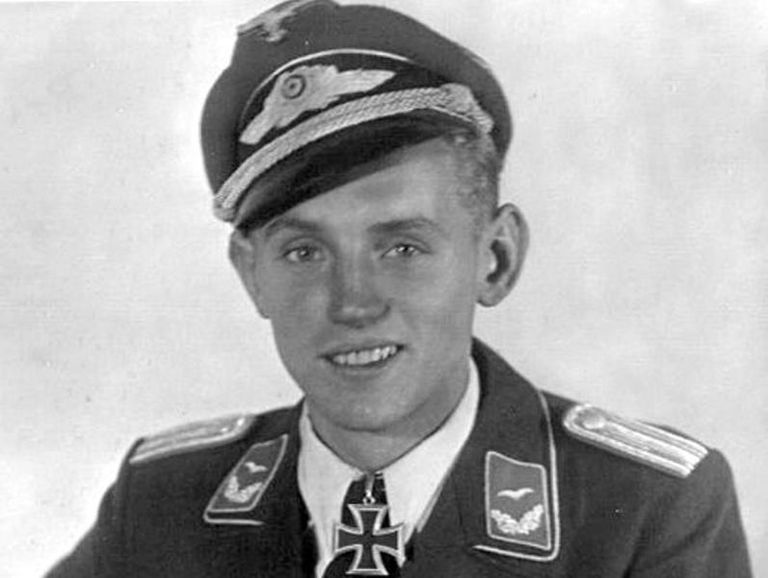
They ended up losing the war, though. And the price was also sky high, for both the Luftwaffe and its pilots. WWII cost Germany 40,000 planes, all types included. It also cost the Luftwaffe 18,600 fighter and zestorer (Heavy fighter) pilots (day and night fighters included). Those figures do not include losses of pilots and crews flying bombers, reconnaissance platforms or transport aircraft.





